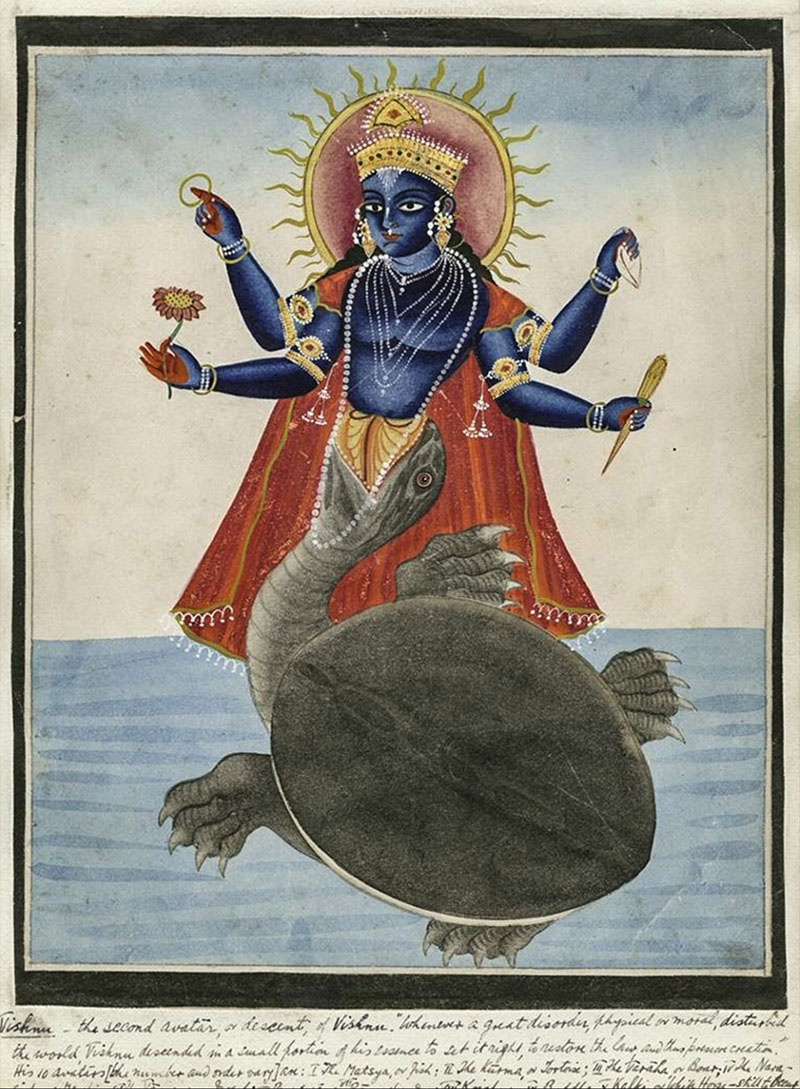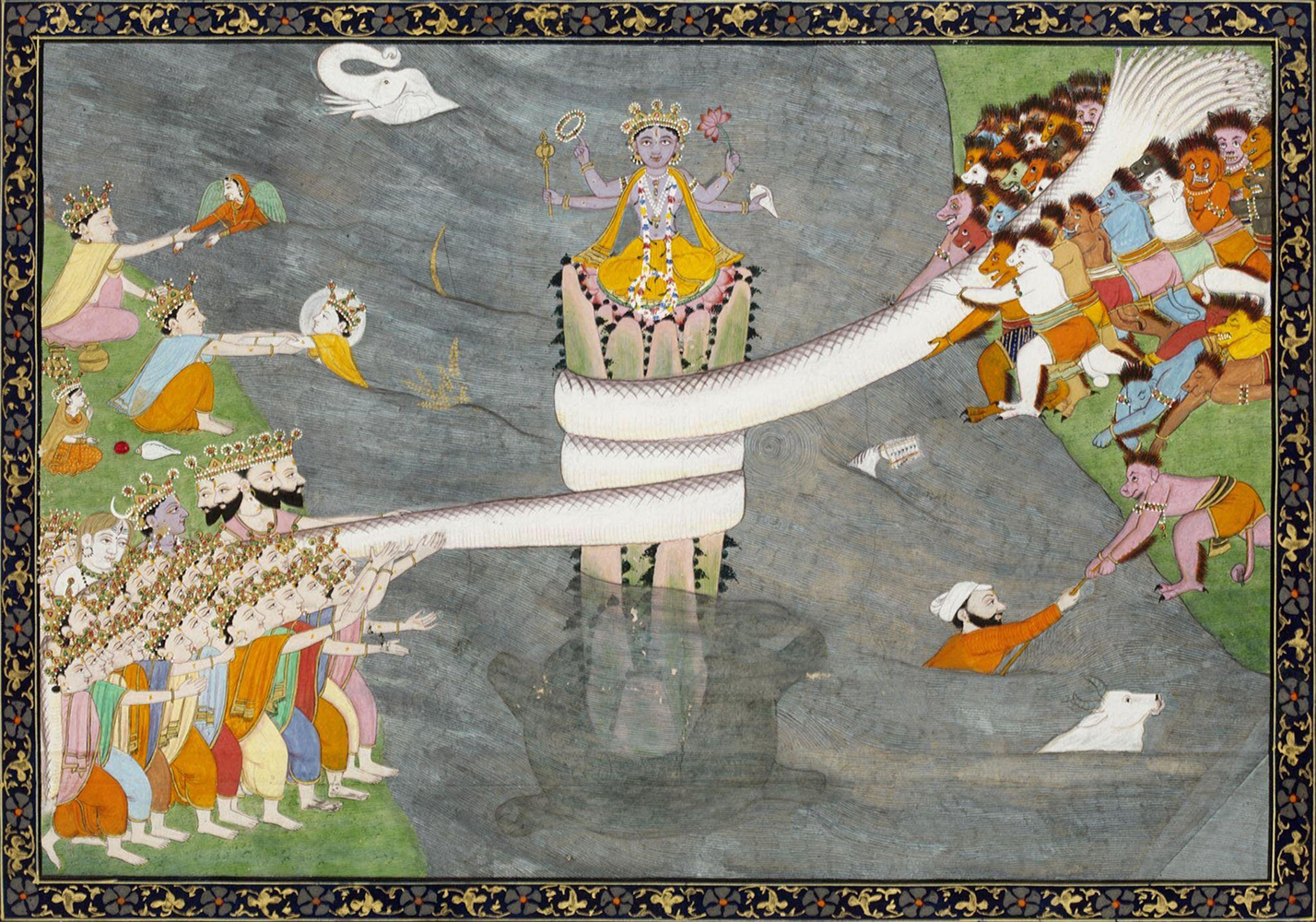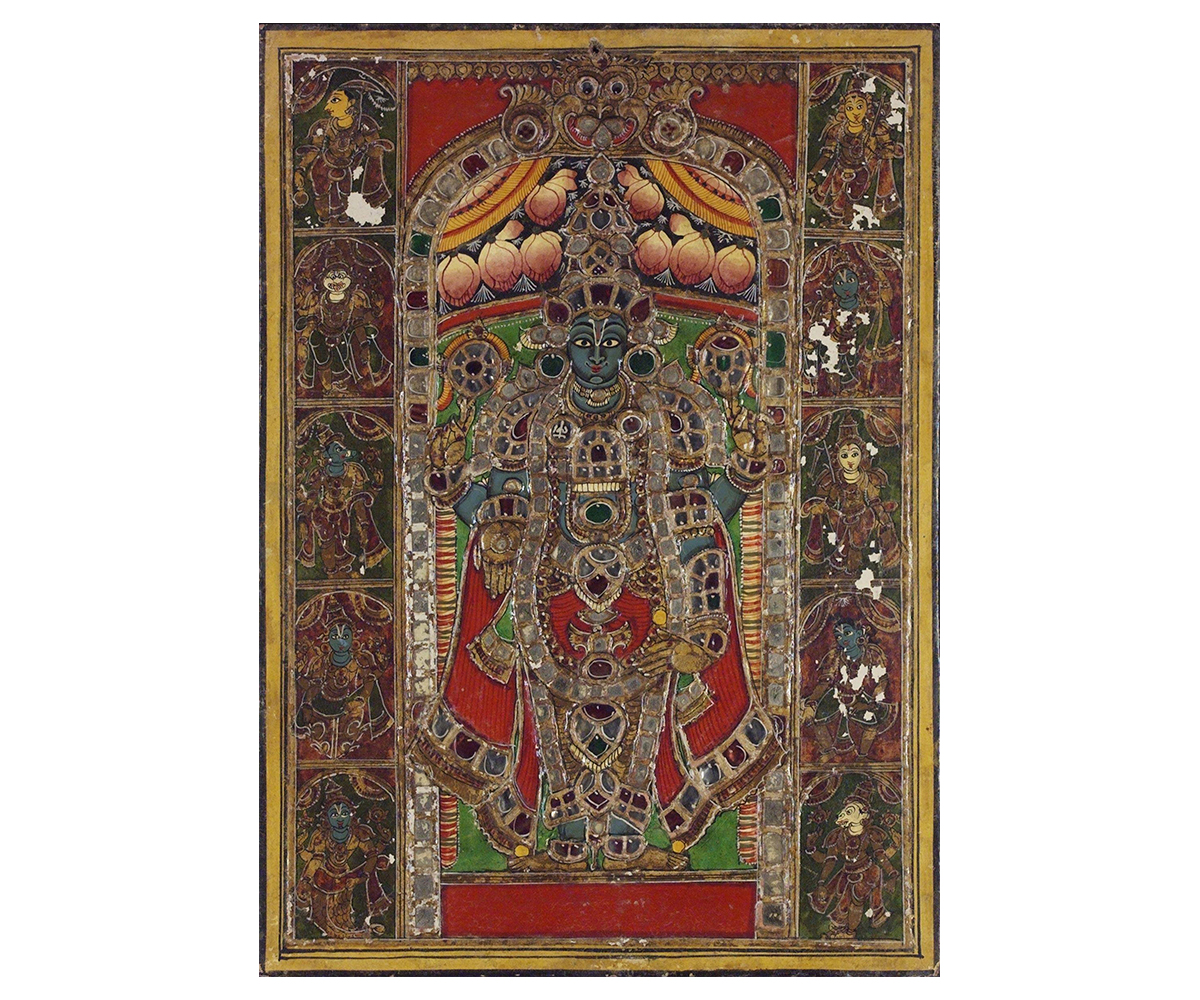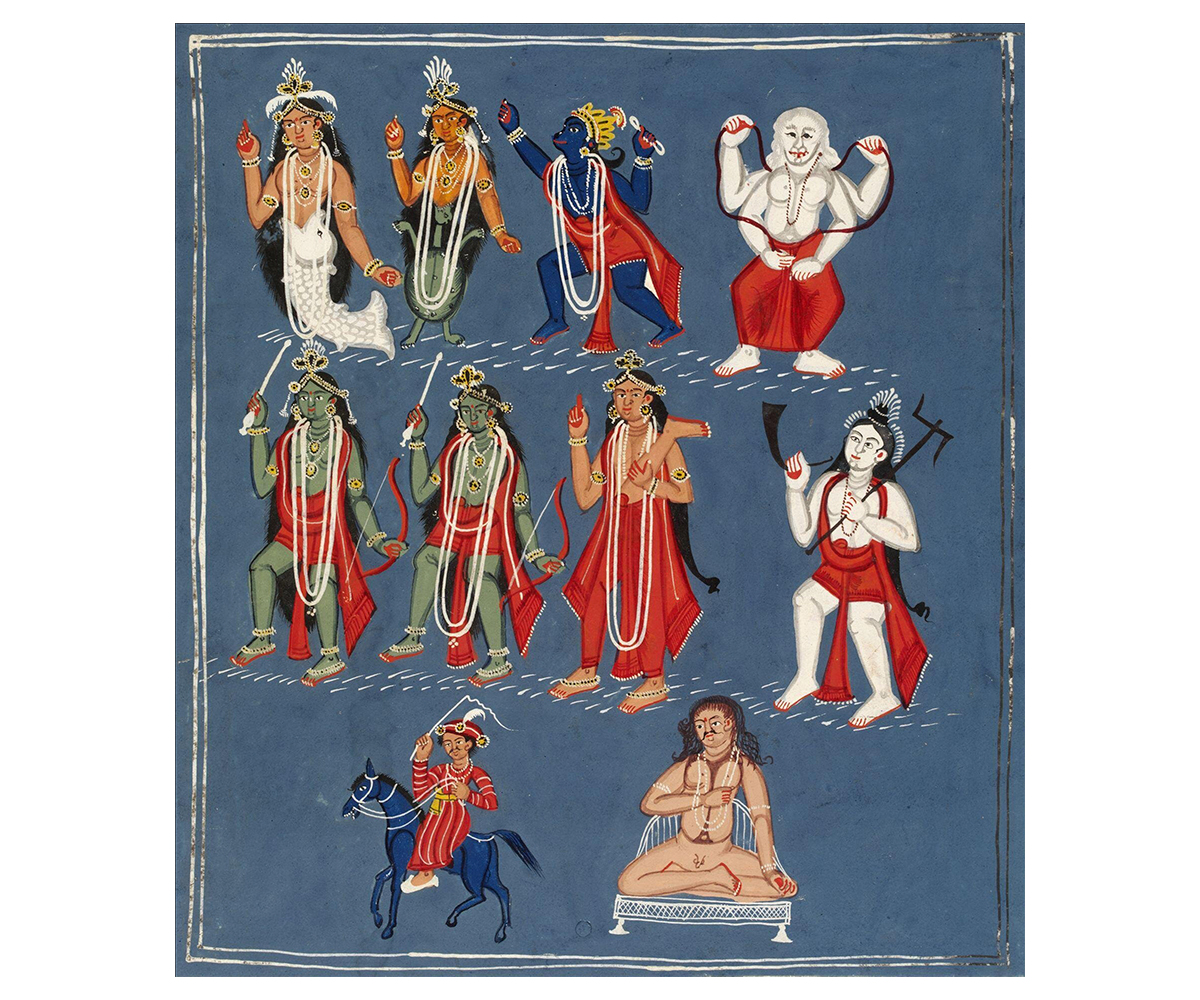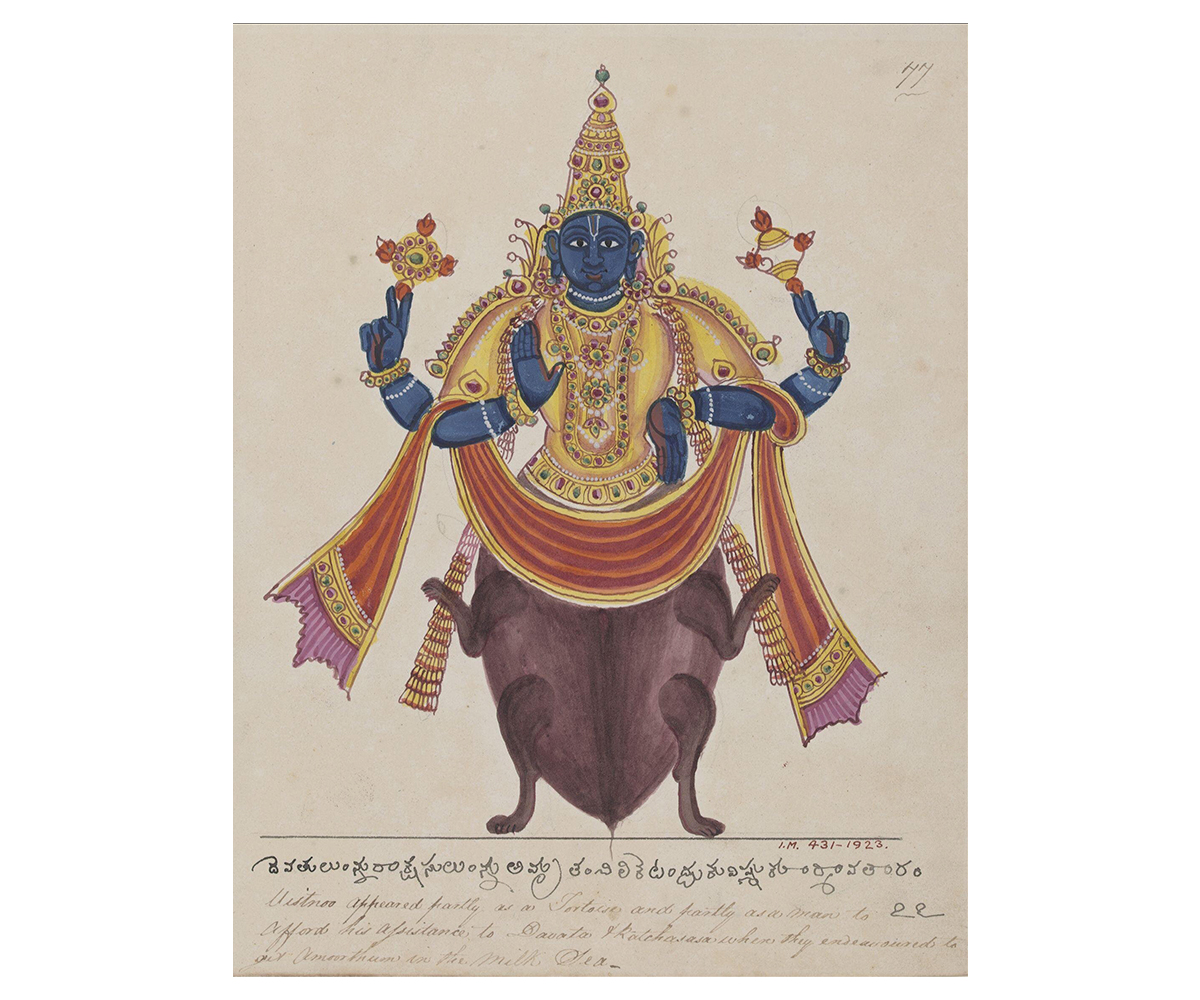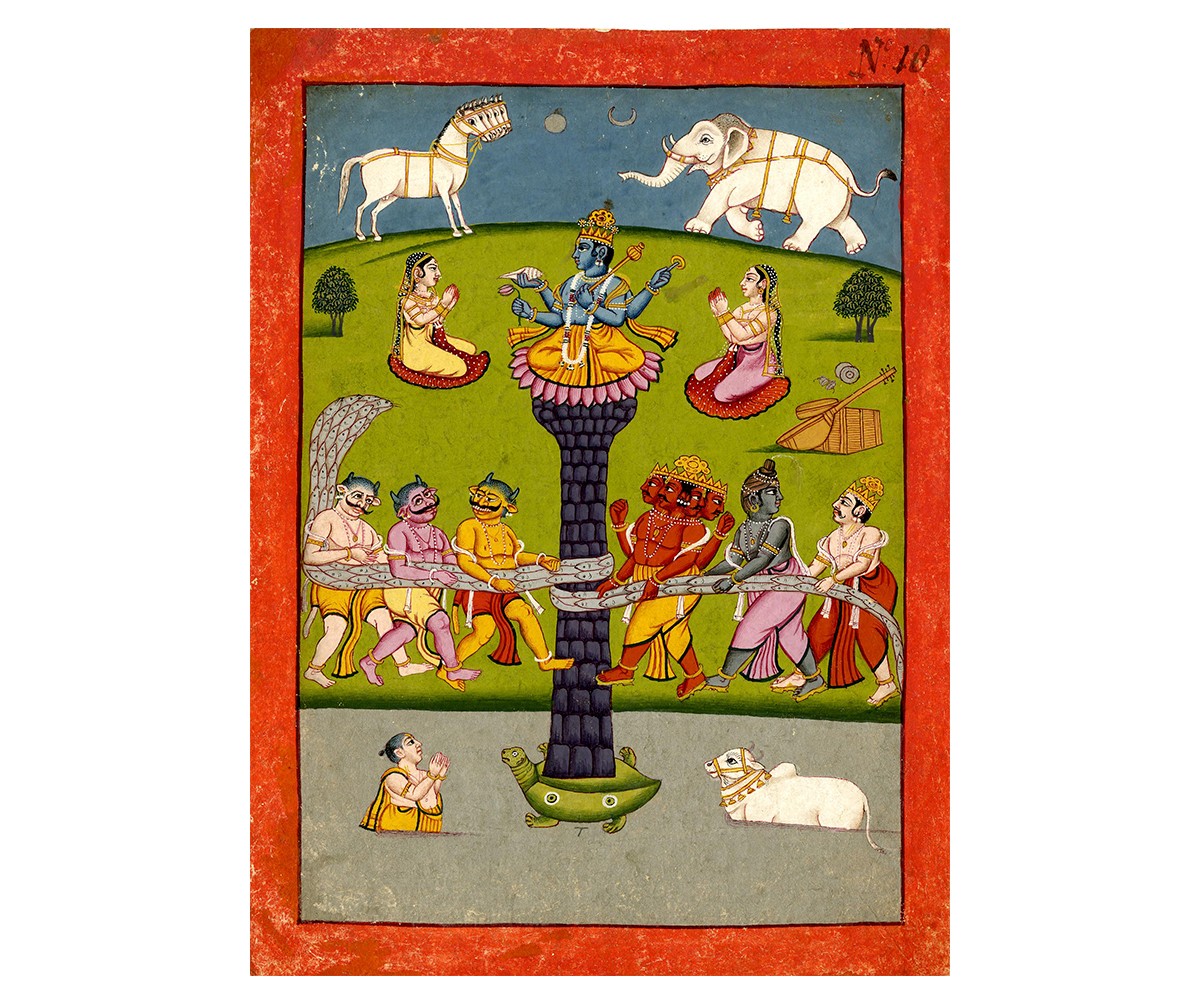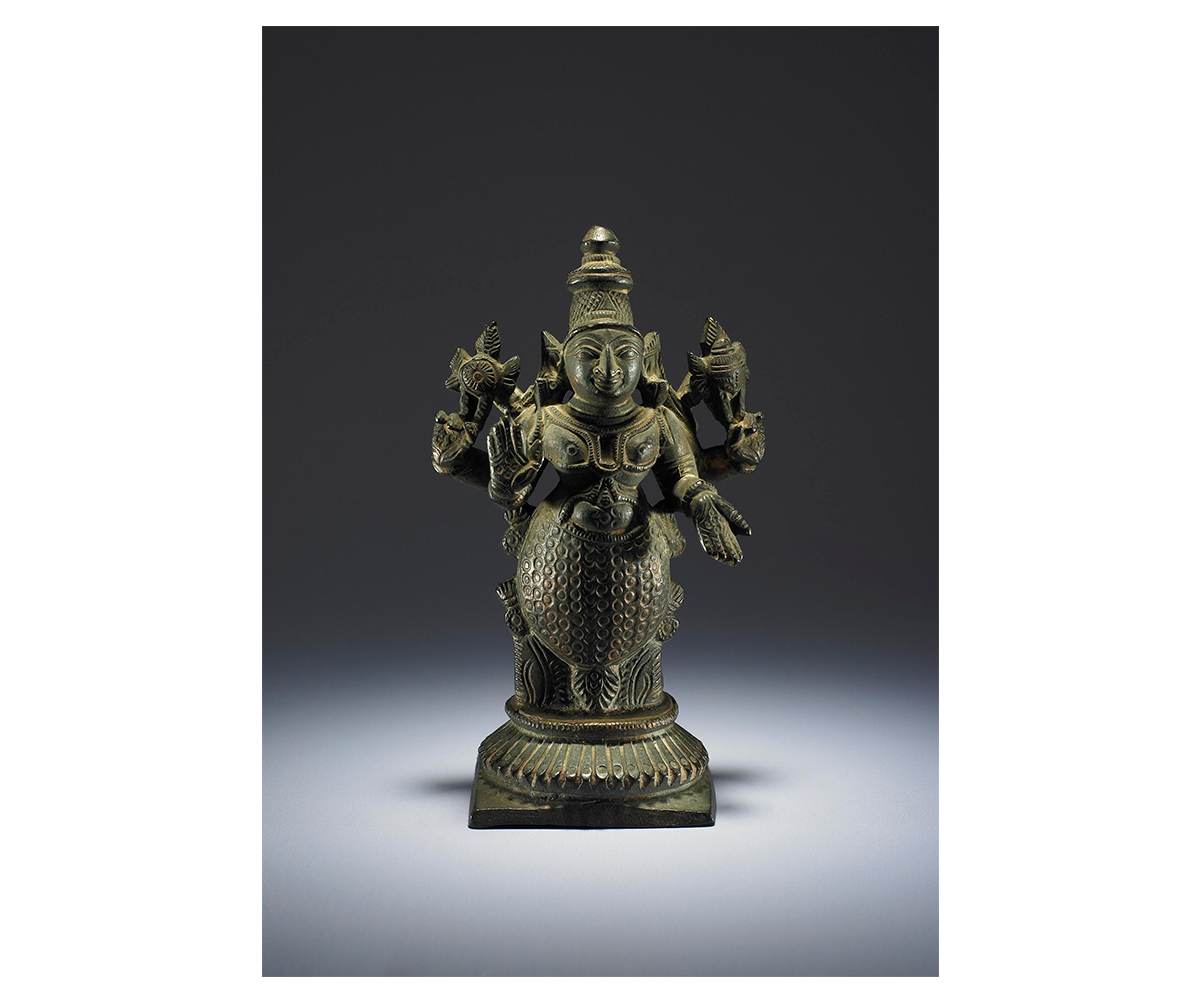ARTICLE
Kurma
Kurma is also conflated with the sage Kashyapa from early Vedic texts such as the Rigveda, and is also referred to by synonymous names meaning ‘tortoise’ in Sanskrit, such as Akupara, Kachhapa and Kamatha, in Puranic stories. The image of a cosmic turtle bearing the world on its back is found in mythologies across diverse ancient cultures including those of China and the Native Americans, as well as in contemporary popular culture such as the fantasy fiction of Terry Pratchett and Stephen King.
Vishnu in his Kurma avatar is depicted in two ways — either as a complete tortoise or as a hybrid, with the lower body of a tortoise and the upper body of a human with four arms. Two of the arms are shown carrying Vishnu’s symbols, the Sudarshan Chakra, the discus, and the shankha, the conch shell, while the other two assume the boon-bestowing varada mudra and the reassuring abhaya mudra. The figure is decorated with resplendent ornaments and wears a tall cap, the kirita-makuta, on its head.
Kurma features prominently in representations of the Dashavatara as a group but does not typically appear singularly or have a significant following of his own. The pre-eleventh-century CE Kurmanathaswamy Temple at Srikurmam, located in the Srikakulam district of present-day Andhra Pradesh, is known to be one of the few sites of premodern Kurma worship.
Bibliography
Banerjea, Jitendra Nath. The Development of Hindu Iconography. New Delhi, India: Munshiram Manoharlal Publishers Pvt. Ltd., 2016.
Dallapiccola, Anna L. Dictionary of Hindu Lore and Legend. London: Thames & Hudson Ltd, 2014.
Doniger, Wendy. The Hindus: An Alternative History. 2nd ed. New Delhi: Speaking Tiger, 2015.
Grundhauser, Eric. “Why is the World Always on the Back of a Turtle?” Atlas Obscura. October 20, 2017. Accessed August 18, 2023. https://www.atlasobscura.com/articles/world-turtle-cosmic-discworld.
Gupte, R. S. Iconography of the Hindus, Buddhists and Jains. D. B. Taraporevala Sons & Co. Private Ltd., 1972.
Rao, T. A. Gopinatha. Elements of Hindu Iconography. Vol. 1.1. Madras: The Law Printing House, 1914.




